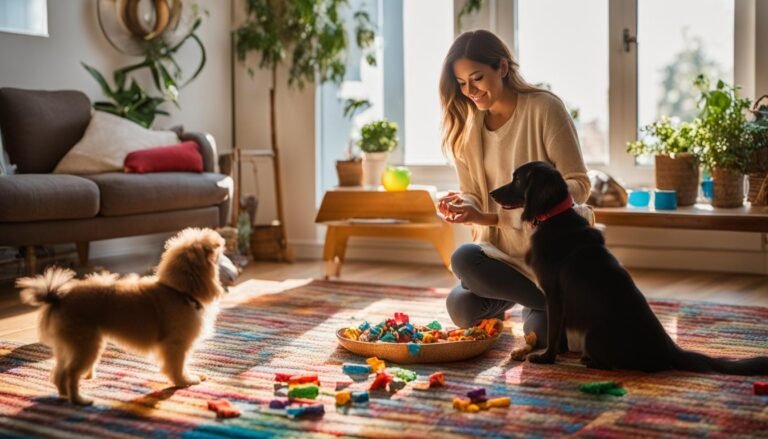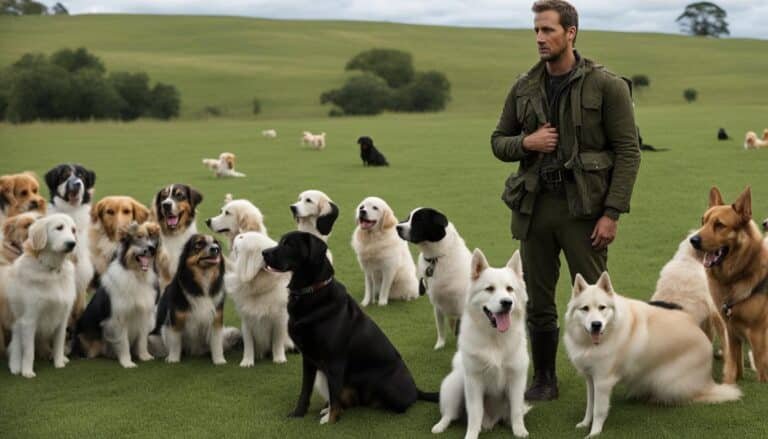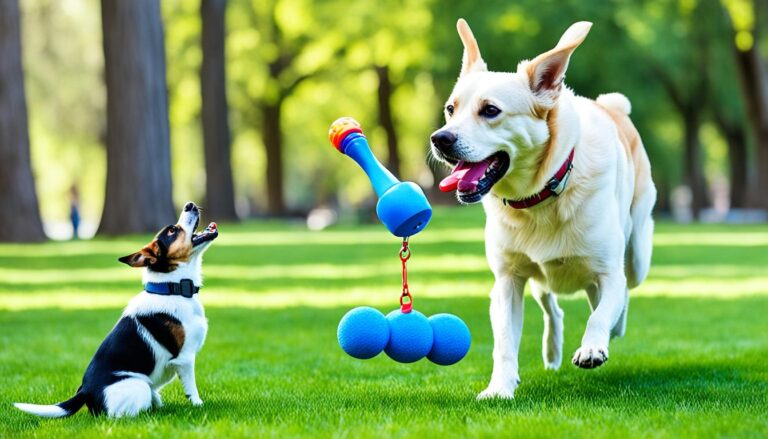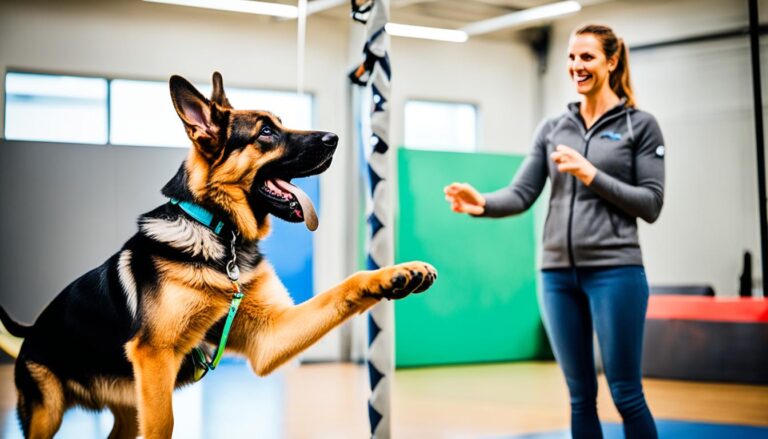How to Train Your Dog to Stay in the Yard
Welcome to the wonderful world of dog ownership! Whether you’re a new dog parent or have had furry companions for years, you know that keeping your dog safe and happy is a top priority. One common challenge many dog owners face is teaching their canine friends to stay within the boundaries of their yard, especially if it’s unfenced.
Meet Bailey, a playful and adventurous Labrador Retriever. Bailey loved exploring the neighborhood, but his curious nature often got him into trouble. From chasing after squirrels to investigating every yard on the block, Bailey’s wanderlust led to frequent encounters with hazards and worried pet parents.
That’s when Bailey’s owners decided it was time to tackle the issue head-on. They embarked on a journey to train Bailey to stay within the yard, ensuring his safety while still allowing him to enjoy the great outdoors. With a combination of consistency, patience, and effective training techniques, they successfully taught Bailey to respect the boundaries of their yard.
If you’re eager to achieve the same results with your furry friend, you’ve come to the right place. In this article, we’ll share valuable tips and techniques on how to train your dog to stay in the yard. From boundary training to management strategies, we’ll equip you with the knowledge and tools to create a safe and secure environment for your beloved pet.
The Benefits of Boundary Training
Boundary training is not just about teaching your dog where they can and cannot go; it goes beyond that. It also helps in teaching household rules and manners, making it an essential part of keeping your dog safe, especially when it comes to outdoor boundaries.
By training your dog to respect boundaries, you can free yourself from constant supervision and management. Instead of constantly worrying whether they will wander off or get into trouble, you can have peace of mind knowing that they will stay within the designated area.
One of the most effective methods for training dogs to respect boundaries is through positive reinforcement. This involves rewarding your dog for exhibiting the desired behavior, such as staying within the yard or not crossing certain boundaries. Positive reinforcement can be in the form of treats, praise, or playtime, which helps reinforce the idea that respecting boundaries leads to positive outcomes.
Using positive reinforcement techniques, you can encourage your dog to make good choices within the boundaries you have set. For example, when they stay within the yard, they can enjoy the freedom to explore and play in a safe environment. By consistently rewarding and reinforcing these behaviors, you can strengthen the association between boundaries and positive experiences for your dog.
Boundary training not only enhances your dog’s safety but also promotes better behavior overall. When your dog understands and respects boundaries, they are more likely to follow other household rules, such as not jumping on furniture or staying out of certain rooms. This contributes to a harmonious and well-behaved pet that can be trusted in various situations.
In conclusion, boundary training is a valuable tool for teaching your dog to respect boundaries and follow important rules. Through positive reinforcement, you can create a positive and rewarding training experience that helps your dog understand the benefits of staying within designated areas. By investing time and effort into boundary training, you can have a well-behaved and safety-conscious pet that brings joy and peace of mind.
Management During Boundary Training
During boundary training, it is crucial to be consistent and not allow your dog to cross the boundaries you have set. This is essential to prevent dogs from wandering off and ensure the effectiveness of the training. To achieve this, you need to employ effective management techniques that will reinforce the training process.
- Indoors, you can use baby gates to block access to certain areas of your home. This ensures that your dog understands which areas are off-limits.
- Outdoors, leashes and long leads can be used to restrict your dog’s movement until they have learned to respect the boundaries. This allows you to have control over their actions and prevents them from venturing beyond the designated area.
By managing your dog’s behavior and not allowing them to cross the boundaries, you are sending a clear message that wandering off is not rewarded. Consistency is key in reinforcing the training and helping your dog understand the importance of staying within the established boundaries.

Having a visual aid during training can be helpful, as it reinforces the concept of boundaries. The image above provides a visual representation of the purpose of boundary training, preventing dogs from wandering off and ensuring their safety.
Boundary Training Indoors
Indoor boundary training is a crucial part of teaching your dog to respect boundaries and stay outside a particular room. By following a gradual process and using positive reinforcement, you can effectively train your dog to make the right choices within your home.
- Start by using your dog’s leash and favorite treats.
- Stand just before entering the room and ask your dog to sit or wait.
- Reward your dog for stopping and not trying to enter the room.
- Gradually take a step into the room while your dog stays outside.
- Continue rewarding your dog for staying put and not attempting to follow you.
- Slowly increase the duration of time that your dog stays outside the room.
- Introduce distractions to the training, such as tossing a toy or playing a game, and reinforce your dog’s decision to stay outside the designated boundary.
Remember, indoor boundary training is a process that requires patience and consistency. By reinforcing the behavior you desire and gradually increasing the difficulty level, your dog will learn to make the right choices and stay outside the designated room.

Boundary Training Outdoors
To train your dog to stay within the boundaries of your yard in an outdoor setting, you can follow a similar concept as indoor training. However, outdoor boundary training incorporates the use of flags and clicker training to help your dog understand the boundaries more effectively.
Start by introducing your dog to the flags indoors. Show them the flags and associate them with a positive experience, such as treats or praise. This will help your dog recognize the flags as a cue for the boundaries.
Once your dog is familiar with the flags, begin placing them outside along the boundary of your yard. Take your dog on a leash and walk around the yard, allowing them to touch or interact with the flags. When they do, reward them with treats or praise to reinforce their understanding of the boundaries.
As your dog becomes more comfortable with the flags and their purpose, gradually increase the distance between your dog and the flags while walking around the yard. This will help them understand the boundaries without the need for physical contact with the flags.
During the training process, it’s important to add distractions to further reinforce your dog’s understanding of the outdoor boundaries. Introduce elements like toys, sounds, or other animals to simulate real-life scenarios and ensure your dog remains within the established limits.
Remember to be patient and consistent throughout the training. Repeat the process regularly and reinforce positive behavior with rewards. With time and practice, your dog will start to associate the outdoor flags with the boundaries of your yard, allowing them to make good choices about where they can and cannot go.
Alternatives to Boundary Training
While boundary training is an effective method for training your dog to stay in the yard, there are alternative options available that you may consider. These alternatives can provide you with additional choices to keep your dog safely contained within your property.
1. GPS Collars
GPS collars are a popular choice among pet owners who want to keep track of their dog’s movements in real-time. These collars utilize satellite technology to provide accurate location information, allowing you to monitor your dog’s whereabouts and receive alerts if they venture beyond a predetermined boundary. GPS collars ensure that even if your dog manages to escape, you can quickly locate them and bring them back home safely.
2. Invisible Fences
Invisible fences offer a discreet way to confine your dog within the yard. These fences utilize underground wires or wireless signals to create an invisible boundary. When your dog approaches the boundary, they receive a mild electric stimulation through a collar, acting as a deterrent to prevent them from crossing. Invisible fences can be customized to fit the size and layout of your yard and provide an effective containment solution for your dog.
3. Tie-Outs
Tie-outs are a simple and affordable alternative for keeping your dog in the yard. They involve securing your dog to a fixed point, such as a stake or post, using a specifically designed tie-out cable or leash. While tie-outs offer a certain level of mobility for your dog within a limited area, it’s important to note that they may cause discomfort if not used properly or for an extended period. It’s crucial to supervise your dog when using tie-outs to ensure their safety.
4. Long Lines
Long lines provide your dog with more freedom to move around while still keeping them within the yard boundaries. These lines are typically made of a durable material, such as nylon, and are attached to a fixed point on one end and a harness or collar on the other end. Long lines allow your dog to explore the yard but prevent them from venturing too far. It’s important to regularly check the condition of the line to ensure it’s in good condition and replace it if necessary.
When considering alternatives to boundary training, it’s important to weigh the advantages and considerations of each option. GPS collars offer real-time tracking but may require a higher upfront investment. Invisible fences provide an invisible boundary but require collar training and maintenance. Tie-outs provide a cost-effective solution but limit your dog’s mobility. Long lines offer more freedom but require careful supervision. Choose the option that best suits your dog’s behavior and your specific requirements to ensure their safety and happiness in the yard.
Tips and Considerations
Training your dog to stay in the yard can be a rewarding and challenging process. To ensure success, it’s important to understand your dog’s behavior and motivations. Some dogs may be more prone to wandering off due to boredom or the desire to mate, while others might easily get distracted by stimuli in the environment. Taking these factors into consideration will help you tailor your training approach to meet your dog’s specific needs.
Consistency and patience are key when training your dog to stay within the boundaries of your yard. It’s essential to establish clear expectations and reinforce them consistently. Use positive reinforcement techniques to reward your dog for staying in the designated area, such as treats or praise. This will help them understand that staying in the yard is a desirable behavior.
If you find that the training process becomes overwhelming or challenging, seeking professional assistance can be beneficial. A professional dog trainer can provide guidance, offer expert advice, and help tailor a training plan specifically for your dog’s needs. They have the necessary experience and knowledge to address any behavioral issues that may arise during the training process.
In addition to training, creating a stimulating and engaging environment within your yard can help reinforce the idea that staying within the boundaries is more rewarding than venturing outside. Provide your dog with toys, puzzles, and interactive activities that keep them mentally and physically stimulated. This will help reduce boredom and decrease the likelihood of them seeking excitement or entertainment outside the yard.






